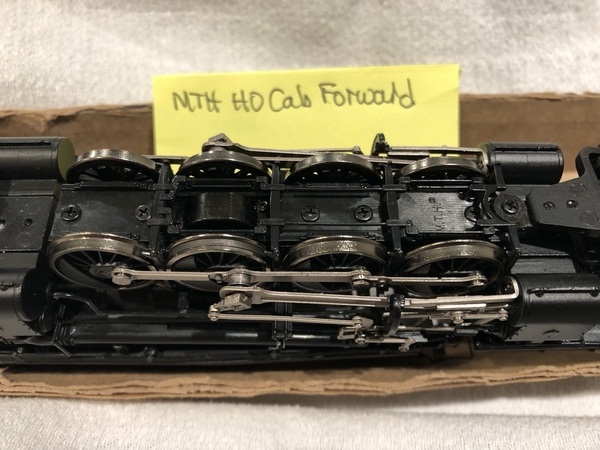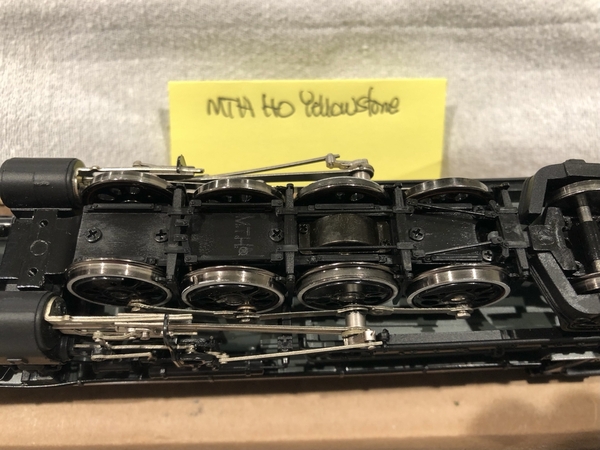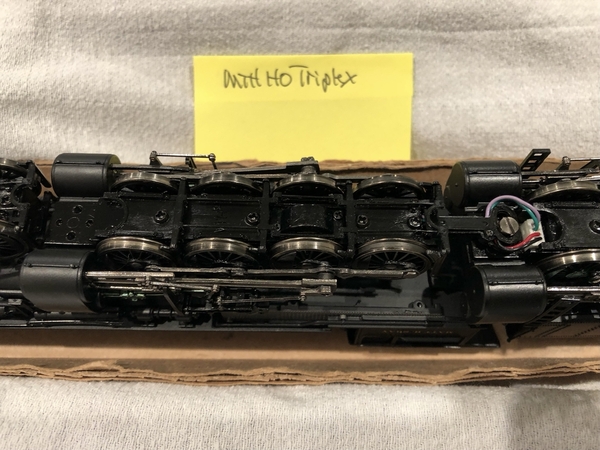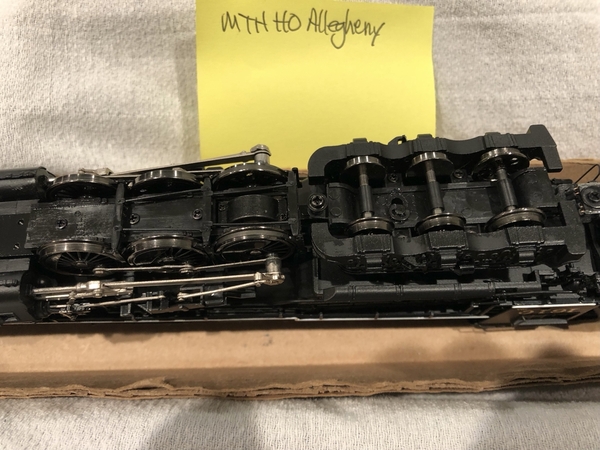I am trying to change the default address of 3 to the cab number of 5014 on my MTH HO Erie Triplex 80-3196-1. I enter POM, program CV29 to 38, get two toots from the loco, call up CV17 and enter the value of 211, but I do not get two toots from the loco. Same thing happens when I call up CV18 and enter the value of 150. I used the MTH address to CV17 and CV18 conversion spreadsheet to get those values, but when I'm done the loco does not respond to either address 3 or 5014. I have to follow a 55-55-55 reset to address the engine with address 3 again. I think the issue is it not providing me confirmation (two toots) for the values I enter into CV17 or CV18. What is wrong? What should I do? Thank you.
"HONGZ" stands for HO scale, N scale, G scale, and Z scale.
Post your non-O scale stuff here!
Replies sorted oldest to newest
Dave,
You should first enter the values of CV17 and CV18. Then while the controller is still set to address 3 program CV29 to 38.
Stuart
Thank you Stuart. That worked great!
Dave
Dave,
Glad to hear that it worked. I've had lots of experience with MTH PS3 HO engines, both mine and at the store I used to work at. It's a great system, but a bit of a pain at times as well. Enjoy your Triplex.
Stuart
Thanks Stuart. It is a pleasure to meet you. I have some experience with MTH HO locos from the four steam engines that I own and briefly with a fifth one, but nowhere near the knowledge it sounds like you have. Don't go far, I'll probably need your help again ![]() .
.
I appreciate and enjoy many of the aesthetic and performance features of MTH HO locos, but DCC functionality and programming is not their long suit. It seems they evolved in terms of that over time. And there's a cut off point where they became noticeably more DCC "friendly" than prior to that, at least in terms of accepting NCE Option1 long address set up programming, using CV8=8 for a factory reset (instead of pretty much only 55-55-55), and that sort of thing. It strikes me that was around the fall of 2014 and beyond. What do you think about that?
One MTH HO engine I very much like, but encountered a disappointing aspect with was their Dreyfuss Hudson. The traction tire wheel set is on the gear-driven middle axle. While all three axles have spring suspension, the middle one has less travel and softer springs than the front and rear axles. The result is the middle axle doesn't seem to set down with as much pressure on the rails as the first and third axles do, so the engine lacks the pulling power you might expect or want it to generate. Does that sound right to you?
Thanks again,
Dave
Hi Dave,
I agree with what you said here about MTH electronics.
As for the MTH Dreyfus Hudson, I'm familiar with that setup. In one way, though, I prefer what MTH did. The reason why is this: On most Broadway Limited steam locomotives the driver with the traction tire is not the geared driver. That results in the extra load from the driver with the traction tire being transmitted to the geared driver through the side rods. Now if you don't run the locomotive often, or with a heavy load, then that's not a problem, but if you do run it frequently or pulling a heavy train, then what happens is that the holes in the side rods wear out. I had this happen to a Santa Fe 3751 class 4-8-4. The holds in the side rods had become ovals. I was able to purchase a replacement set of side rod from Broadway Limited to fix the problem. What I also have done is on any of their steam locomotives which came with the extra drivers without tires I put those on instead. Yes, it cut down the pulling power, but I don't have the problems with the side rods on them either because the load is evenly distributed through the entire running gear.
Stuart
Thanks Stuart. That makes sense from a design POV. Three of my four MTH HO steam engines have their traction tires on gear driven axles - see photos attached. The exception being the Triplex.
That MTH HO Dreyfuss was only here temporarily b/c it lifted its center drive wheels off the rails for some portion of every rotation. See video attached. In order for the camera to focus, the video is not close up enough to see the lifting very well, but closer in I could see it happening. Have you ever seen that before? What might have been wrong with it? That lifting not only caused slippage and poor traction, but also instability (i.e. derailments). I'm assuming, there was just something wrong with that particular example.
I replaced it with a BLI P4 Dreyfuss which in some ways falls short of the MTH (e.g. no ground lights), but isn't bad and generates over 10 oz of pulling power. BLI drives the middle axle and has traction tires on the rear drive wheels. They do, however, something interesting with the suspension of the drivers. The front and middle axles are mildly suspended and fairly well set in place, but the rear axle, while also spring suspended, has far more degrees of freedom (pitch, yaw, and roll) which somehow translates into very positive contact with the rails no matter whether going uphill, downhill, on the flats, or over less than perferctly even track. I'll just have to keep an eye on worn connecting rods which, now that you mention it, might be what's wrong with my P2 RDG T-1 that runs with a noticeable lurchiness at mid-range speeds.
I too would prefer to run all metal wheels, but our club's permanent layout has several mountain helixes (there are 7 levels) including one of particular challenge to many engines. It is frankly the acid test for whether an engine can run on the layout alone, all the more with cars in tow, or must be MU'd with other engines. Therefore, the extra adhesion of traction tires for now comes in very useful.
Thanks again for your expertise and insights.
Dave













